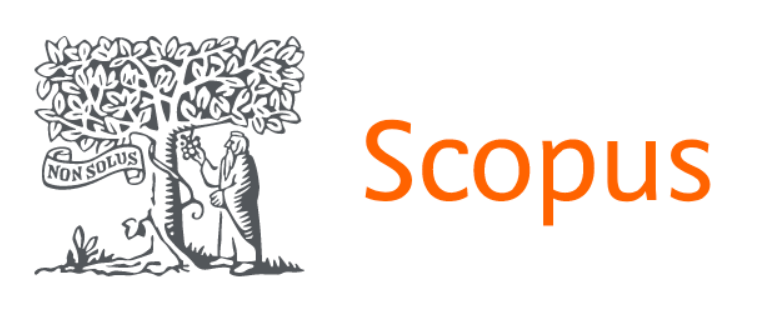COLLABORATIVE PUBLIC MANAGEMENT IN UNDERGROUND WATER BANK PROJECTS: A MULTI-THEORETICAL ANALYSIS OF LOCAL GOVERNMENT INNOVATION IN THAILAND
DOI:
https://doi.org/10.18623/rvd.v22.n2.3088Keywords:
Collaborative Public Management, CPM, Local Government, Environmental Governance, Water Management, Developing CountriesAbstract
This study examines collaborative public management (CPM) in underground water bank projects across three Thai local governments, addressing gaps in CPM research that predominantly focuses on developed countries. Using qualitative methodology with 32 in-depth interviews across five stakeholder groups local government officials (9), government agency representatives (9), academic experts (3), community leaders and citizens (9), and civil society organizations (2) the research investigates how CPM operates in resource-constrained environments. The study explores three key questions: how CPM dimensions manifest in resource-limited contexts, whether technology enhances collaborative governance relationships, and what mechanisms enable knowledge integration in environmental management. Findings reveal that effective CPM requires hybrid leadership combining transformational and network orchestration capabilities, technology-enhanced coordination that builds upon rather than replaces existing social capital, and institutional layering that creates new arrangements while respecting traditional structures. The research contributes eight theoretical advances to collaborative governance understanding, demonstrating that CPM dimensions manifest differently in developing countries and require systematic adaptation rather than direct replication of developed country models. Results highlight the importance of context-sensitive CPM approaches and advance knowledge of technology-social capital integration in developing country environmental governance, particularly in water resource management.
References
Agranoff, R. (2007). Managing within networks: Adding value to public organizations. Georgetown University Press.
Agranoff, R., & McGuire, M. (2003). Collaborative public management: New strategies for local governments. Georgetown University Press.
Alexander, E. (2014). How organizations act together: Interorganizational coordination in theory and practice. Routledge.
Ansell, C., & Gash, A. (2008). Collaborative governance in theory and practice. Journal of public administration research and theory, 18(4), 543-571. https://doi.org/10.1093/jopart/mum032
Bass, B. M., & Riggio, R. E. (2006). Transformational leadership. Psychology press.
Bingham, G. (1985). Resolving Environmental Disputes: A Decade of Experience: Executive Summary. Conservation Foundation.
Bryson, J. M., Crosby, B. C., & Stone, M. M. (2006). The design and implementation of Cross‐Sector collaborations: Propositions from the literature. Public administration review, 66, 44-55. https://doi.org/10.1111/j.1540-6210.2006.00665.x
Bryson, J. M., Crosby, B. C., & Stone, M. M. (2015). Designing and implementing cross‐sector collaborations: Needed and challenging. Public administration review, 75(5), 647-663. https://doi.org/10.1111/puar.12432
Chuenchum, P., Meneesrikum, C., Teerapanuchaikul, C., & Sriariyawat, A. (2024). Community participation and effective water management: A study on water user organizations (WUOs) in Thailand. World Development Perspectives, 34, 100589. https://doi.org/10.1016/j.wdp.2024.100589
Cordella, A., & Tempini, N. (2015). E-government and organizational change: Reappraising the role of ICT and bureaucracy in public service delivery. Government information quarterly, 32(3), 279-286. https://doi.org/10.1016/j.giq.2015.03.005
Cristofoli, D., Meneguzzo, M., & Riccucci, N. (2017). Collaborative administration: the management of successful networks. Public management review, 19(3), 275-283. https://doi.org/10.1080/14719037.2016.1209236
Dunleavy, P., Margetts, H., Bastow, S., & Tinkler, J. (2006). New public management is dead long live digital-era governance. Journal of public administration research and theory, 16(3), 467-494. https://doi.org/10.1093/jopart/mui057
Emerson, K., & Nabatchi, T. (2015). Collaborative governance regimes. Georgetown University Press.
Emerson, K., Nabatchi, T., & Balogh, S. (2012). An integrative framework for collaborative governance. Journal of public administration research and theory, 22(1), 1-29. https://doi.org/10.1093/jopart/mur011
Evans, P., & Heller, P. (2015). Human development, state transformation and the politics of the developmental state. In S. Leibfried, F. Nullmeier, E. Huber, M. Lange, J. Levy, & J. D. Stephens (Eds.), The Oxford handbook of transformations of the state (pp. 691-713). Oxford University Press.
Fischer, F. (2000). Citizens, experts, and the environment: The politics of local knowledge. Duke University Press.
Gil-Garcia, J. R., Pardo, T. A., & Gasco-Hernandez, M. (2020). Internet of things and the public sector. In Beyond smart and connected governments: Sensors and the Internet of things in the public sector (pp. 3-24). Cham: Springer International Publishing.
Gray, B. (1999). Collaborating: Finding common ground for multiparty problems. Jossey Bass.
Head, B. W. (2008). Three lenses of evidence‐based policy. Australian Journal of Public Administration, 67(1), 1-11. https://doi.org/10.1111/j.1467-8500.2007.00564.x
Helmke, G., & Levitsky, S. (2012). Informal institutions and comparative politics: A research agenda. Edward Elgar Publishing.
Imperial, M. T. (2005). Using collaboration as a governance strategy: Lessons from six watershed management programs. Administration & society, 37(3), 281-320. https://doi.org/10.1177/0095399705276111
Innes, J. E., & Booher, D. E. (2010). Planning with complexity: An introduction to collaborative rationality for public policy. Routledge.
Janssen, M., & Estevez, E. (2013). Lean government and platform-based governance Doing more with less. Government Information Quarterly, 30, S1-S8. https://doi.org/10.1016/j.giq.2012.11.003
Klijn, E. H., & Teisman, G. R. (2003). Institutional and strategic barriers to public private partnership: An analysis of Dutch cases. Public money and Management, 23(3), 137-146. https://doi.org/10.1111/1467-9302.00361
Klijn, E. H., Koppenjan, J., Spekkink, W., & Warsen, R. (2025). Governance networks in the public sector (p. 283). Taylor & Francis.
Lin, N. (2002). Social capital: A theory of social structure and action (Vol. 19). Cambridge university press.
Mahoney, J., & Thelen, K. (Eds.). (2009). Explaining institutional change: Ambiguity, agency, and power. Cambridge University Press.
March, J. G., & Olsen, J. P. (1989). Rediscovering institutions: The organizational basis of politics. Free Press.
Margetts, H., & Dunleavy, P. (2013). The second wave of digital-era governance: a quasi-paradigm for government on the Web. Philosophical transactions of the royal society A: mathematical, physical and engineering sciences, 371(1987), 20120382. https://doi.org/10.1098/rsta.2012.0382
McGuire, M. (2006). Collaborative public management: Assessing what we know and how we know it. Public administration review, 66, 33-43. https://doi.org/10.1111/j.1540-6210.2006.00664.x
Morse, R. S., & Stephens, J. B. (2012). Teaching collaborative governance: Phases, competencies, and case-based learning. Journal of Public Affairs Education, 18(3), 565-583. https://doi.org/10.1080/15236803.2012.12001700
Muenratch, P., & Nguyen, T. P. L. (2022). Local Governance of Groundwater Resources through the Lens of Stakeholders in the Context of State-Led Management in the Lower Mekong Region. Water, 14(19), 3043. https://doi.org/10.3390/w14193043
Nabatchi, T. (2007). Deliberative democracy: The effects of participation on political efficacy (Doctoral dissertation, Indiana University).
Nonik, V., Tkachenko, A., Arifkhodzhaieva, T., Halunko, O., & Trehub, D. (2024). Enhancing governance through anti-corruption strategies: Exemplary approaches and obstacles . Multidisciplinary Science Journal, 6, 2024ss0704. https://doi.org/10.31893/multiscience.2024ss0704
Nutley, S. M., Walter, I., & Davies, H. T. (2007). Improving research use in practice contexts. In Using evidence (pp. 195-230). Policy Press.
O'Leary, R., & Bingham, L. B. (2009). The collaborative public manager: New ideas for the twenty-first century. Georgetown University Press.
Osborne, S. P. (2006). The new public governance? Public Management Review, 8(3), 377-387. https://doi.org/10.1080/14719030600853022
Ostrom, E. (2009). Understanding institutional diversity. Princeton university press.
Pahl-Wostl, C. (2019). The role of governance modes and meta-governance in the transformation towards sustainable water governance. Environmental science & policy, 91, 6-16. https://doi.org/10.1016/j.envsci.2018.10.008
Peters, B. G. (2019). Institutional theory in political science: The new institutionalism. Edward Elgar Publishing.
Pfeffer, J., & Salancik, G. (2015). External control of organizations---Resource dependence perspective. In Organizational behavior 2 (pp. 355-370). Routledge.
Provan, K. G., & Kenis, P. (2008). Modes of network governance: Structure, management, and effectiveness. Journal of public administration research and theory, 18(2), 229-252. https://doi.org/10.1093/jopart/mum015
Putnam, R. D. (1993). Making democracy work: Civic traditions in modern Italy. Princeton University Press.
Sandhu, M. S., Jain, K. K., & bte Ahmad, I. U. K. (2011). Knowledge sharing among public sector employees: evidence from Malaysia. International Journal of Public Sector Management, 24(3), 206-226. https://doi.org/10.1108/09513551111121347
Silvia, C. (2018). Evaluating collaboration: The solution to one problem often causes another. Public Administration Review, 78(3), 472-478. https://doi.org/10.1111/puar.12888
Sriram, S., Shrivastav, A. K., Sony, A., Singh, V. A., & Banu, S. (2024). Investigation of significance of enhancing governance performance in government entities . Multidisciplinary Science Journal, 6, 2024ss0401. https://doi.org/10.31893/multiscience.2024ss0401
Tarasenko, T., Sorokina, N., Kashchenko, N., Branitska, T., & Kukhar, I. (2024). International collaboration in public governance: assessing the role of collective initiatives and organisations. Multidisciplinary Science Journal, 6, 2024ss0715. https://doi.org/10.31893/multiscience.2024ss0715
Torfing, J. (2012). Interactive governance: Advancing the paradigm. Oxford University Press.
Wiig, K. M. (2002). Knowledge management in public administration. Journal of Knowledge Management, 6(3), 224-239. https://doi.org/10.1108/13673270210434331
Wright, B. E., & Pandey, S. K. (2010). Transformational leadership in the public sector: Does structure matter?. Journal of public administration research and theory, 20(1), 75-89. https://doi.org/10.1093/jopart/mup003
Yang, K. (2007). Individual social capital and its measurement in social surveys. Survey Research Methods, 1(1), 19-27. https://doi.org/10.18148/srm/2007.v1i1.48
Young, J.C., Waylen, K.A., Sarkki, S. et al. (2014). Improving the science-policy dialogue to meet the challenges of biodiversity conservation: having conversations rather than talking at one-another. Biodiversity and Conservation, 23(2), 387-404. https://doi.org/10.1007/s10531-013-0607-0
Downloads
Published
How to Cite
Issue
Section
License
I (we) submit this article which is original and unpublished, of my (our) own authorship, to the evaluation of the Veredas do Direito Journal, and agree that the related copyrights will become exclusive property of the Journal, being prohibited any partial or total copy in any other part or other printed or online communication vehicle dissociated from the Veredas do Direito Journal, without the necessary and prior authorization that should be requested in writing to Editor in Chief. I (we) also declare that there is no conflict of interest between the articles theme, the author (s) and enterprises, institutions or individuals.
I (we) recognize that the Veredas do Direito Journal is licensed under a CREATIVE COMMONS LICENSE.
Licença Creative Commons Attribution 3.0







